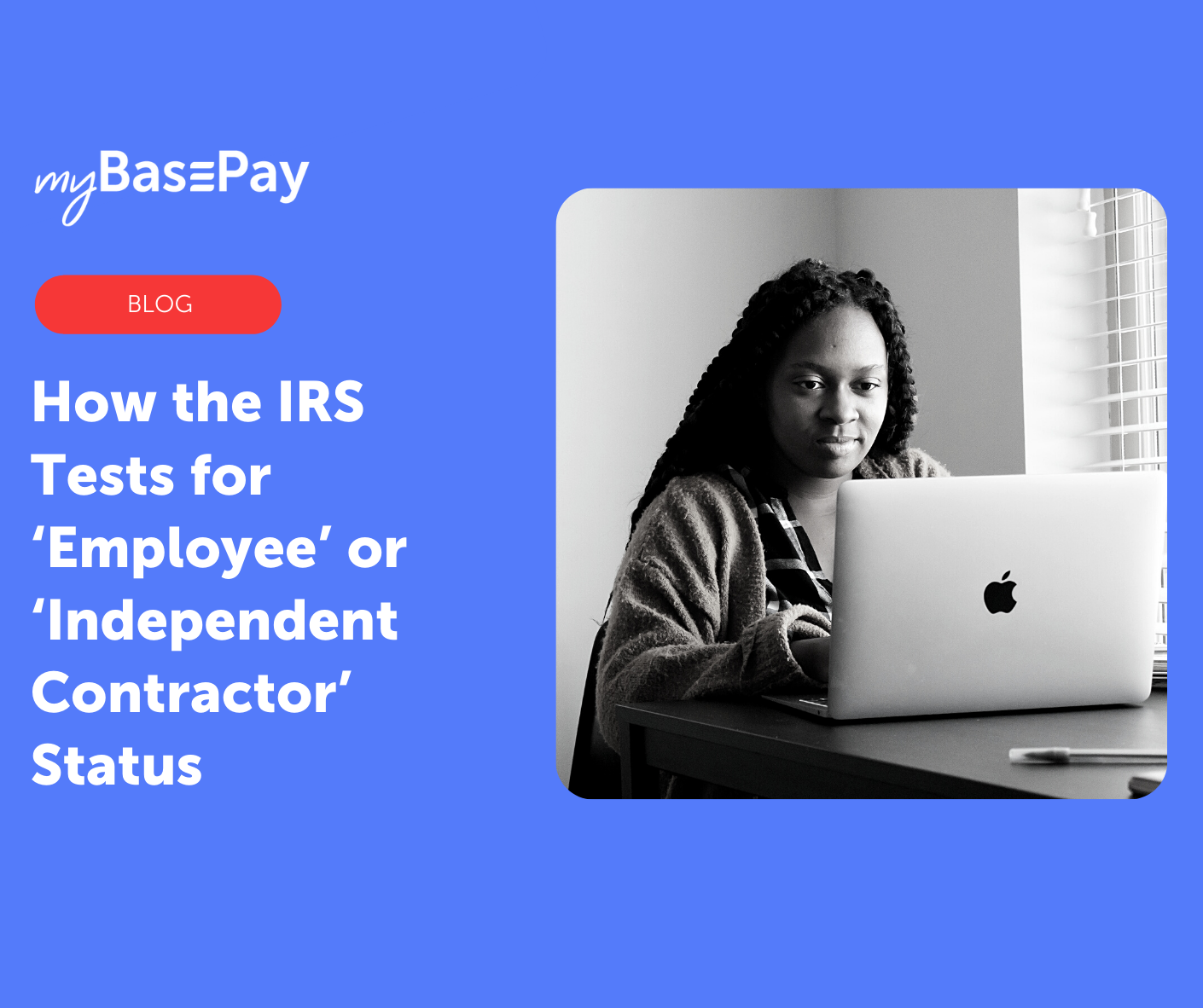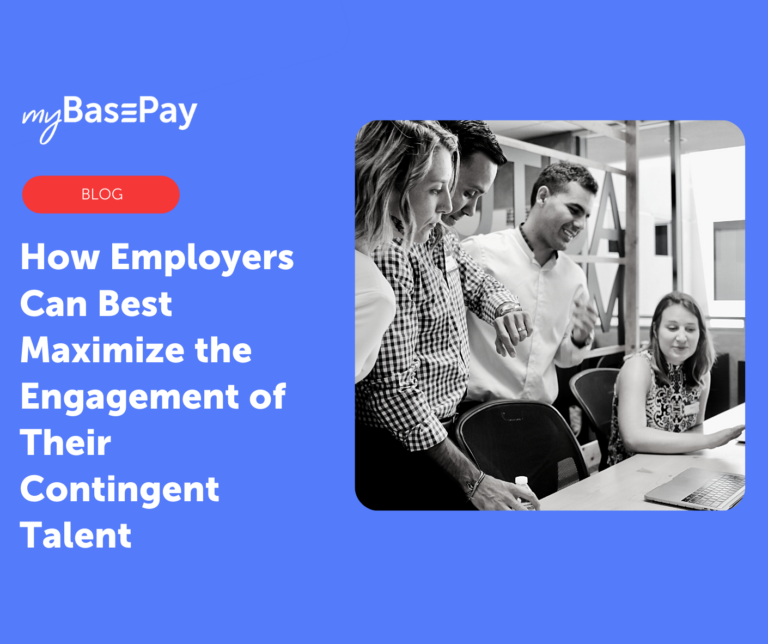How the IRS Tests for ‘Employee’ or ‘Independent Contractor’ Status
One of the trickiest aspects of managing a hybrid workforce with both full-time employees and independent contractors is ensuring that everyone is properly classified for tax purposes. While successful relationships with freelancers can improve your business’s scalability and provide a much-needed boost to your bottom line, classification issues could easily result in costly penalties.
To avoid these setbacks, employers must understand how the IRS tests whether a worker is an employee or an independent contractor. Under the common law test, the IRS primarily looks at three main factors: behavioral control, financial control and relationship control.
By understanding what these factors mean, as well as the questions and issues that the IRS uses to define the worker-employer relationship, you can ensure that your business is fully compliant.
Behavioral Control
In the broadest sense, behavioral control questions look at how the worker does their job, and what level of control the employer has over their work. Here are some common behavioral control questions to consider:
Does your business control how the worker performs their work? Independent contractors are generally able to control when and where they work. Employees, on the other hand, are expected to follow a set daily schedule, whether working remotely or in the office. Independent contractors can choose what equipment they use to fulfill an assignment, and could even hire substitutes or helpers to finish the work. Employees generally must use employer-provided equipment, and cannot “outsource” their work to others.
Do you provide extensive instructions on how work is to be completed? There is a difference between telling a contractor you want red paint as opposed to blue paint, and providing specific step by step instructions on how they are supposed to paint a wall. The greater the level of control over what the worker does, the more likely they are to be considered an employee.
Do you provide training about required procedures and practices? Providing training to a worker (including working with a more experienced individual or attending educational meetings) indicates you have specific expectations for how work will be performed. The IRS is more likely to view this as meaning the person in question is an employee, rather than a contractor.
Financial Control
As with behavioral control, issues regarding financial control concern how much control the company has over the business side of an individual’s work (including how they are paid). When considering financial control, the IRS often looks at these questions:
What is the pay basis? Employees are typically paid on an hourly or salary basis. Independent contractors, on the other hand, receive a commission or fee upon completion of a specific project or assignment.
Has the worker invested in their work? Independent contractors invest in their own equipment and work facilities. They incur these expenses as part of running their own business. Employees, on the other hand, use work facilities that are provided by their employer. They have no personal investment.
Does the company reimburse the worker for their business expenses? Both contractors and employees may need to purchase equipment or incur travel expenses as part of their work. Businesses typically reimburse employees for these expenses. Contractors bear their own expenses, and set their fees accordingly.
Can the worker realize a profit associated with their work? Employees will always get paid, regardless of poor performance (though they can still get disciplined or fired). Contractors, on the other hand, realize a direct profit or loss with their work. If they don’t complete the project, they don’t get paid.
Relationship Control
The way that the business and worker perceive their relationship with one another is more than just an attitude. It is reflected in various ways that the two parties interact with each other. Some key questions that can define the nature of the relationship:
How do the business and worker perceive their relationship? Full-time employees generally cannot perform similar services for other companies during their employment. Contractors are free to do business with other individuals or organizations as their schedule allows. While employers hold unilateral right of termination for employees, they typically cannot prematurely terminate services with independent contractors without some measure of liability.
Are employee benefits provided to the worker? Benefits such as paid vacations, pensions, insurance coverage and sick days are offered by employers to their employees. Contractors do not receive such benefits, nor do they have taxes withheld when they are paid by the business.
Is this a continuous relationship? In an employee relationship, the worker is expected to continuously work for the organization until they quit or are fired. With contractors, however, the relationship only lasts as long as the job requires. A contractor could work on several sequential projects and still maintain contractor status, but the scope of the relationship does not extend beyond the agreed-upon terms.
Is there a written contract? In any hiring situation, a written contract that defines the terms of the relationship is absolutely essential. Written agreements should clearly state whether an individual is an employee or independent contractor. These agreements should also detail pay basis (such as salary or per project), as well as other considerations that can more clearly define their work status.
Reduce Classification Risk With an EOR
The IRS takes worker classification very seriously. Penalties for worker misclassification may include “a $50 fine for each Form W-2 the employer failed to file on such employee, a penalty of up to 3% of the wages, plus up to 40% of the FICA taxes that were not withheld from the employee and up to 100% of the matching FICA taxes the employer should have paid. If the IRS determines that an employer misclassified its employees willfully, the penalties are even greater.”
However, businesses can offset their risk by partnering with an employer of record (EOR) such as myBasePay. By serving as the legal employer for tax purposes, an EOR provides full cycle compliance administration, assuming all responsibilities and liabilities associated with employment.
Through this partnership, your team won’t have to worry about the potential penalties and fines associated with misclassifying workers. Instead, you can focus on fostering strong relationships with employees and contractors alike.
Author: Cesar Jimenez, myBasePay CEO
Cesar A. Jimenez is an entrepreneur, investor, and military veteran with over 25 years of staffing industry expertise successfully leading technology staffing organizations. His expertise in the IT industry allows him to use his experience as a thought leader for talent acquisition, staffing, IT, and recruitment technologies with a passion for contingent workforce solutions. Cesar has held various leadership roles for both a global staffing organization and technology solutions companies. This expertise has enabled him to develop alternative workforce models that provide the agility for organizations to be competitive in today’s marketplace. In his spare time, he enjoys spending time with hisfamily, working out, and coaching high school baseball players.






